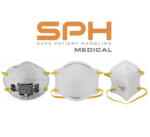Improving nursing safety is the primary goal in any formalized Safe Patient Handling program being implemented across the country here in the United States and even internationally. This article will discuss the risks associated with manual patient handling that occurs during epidural placement, spinal blocks and thoracentesis.
First, a little background about epidurals. An epidural is regional anesthesia applied to expectant mothers in labor and delivery units to desensitize pain receptors. The success of an epidural depends upon the skills of the anesthesiologist but one could say that patient positioning is the priority and may be equally or more important.
The epidural procedure is vital to manage pain during labor and in surgical procedures. For effective epidural placement, the patient should be in a sitting position or lying on their side.
The nurses and physicians will assist the patient in assuming the correct position. The physicians carry out the procedure using a sterile technique with local anesthesia at the site of injection.
After your skin gets numb, the anesthesiologist will pass the needle between the lumbar vertebrae into the epidural space. A continuous infusion is preferable for most labor epidurals to ensure no wearing off of the anesthesia.
Epidural pain relief produces a numb sensation on the legs and abdomen for patients in labor which masks the discomfort experienced in delivery. Although epidural pain relief lacks a significant effect on mental functions or awareness, patients may rest and even sleep till the time to push in the case of delivery.
Note that labor analgesia aims to relieve the pain sensation but not to block it completely. Pushing is a vital part of vaginal delivery, and the patients must have the muscular strength to make it successful.
Safety of An Epidural
The medications used in labor as epidural analgesia lack significant adverse effects on the newborns. Over decades, no appreciable side effects of the drugs occur in babies.
However, those undergoing surgeries and women in labor may experience mild itching and difficulty in passing urine. Other adverse effects include nausea and mild back pain post-delivery.
Although it is effective in managing pain during labor, it is unsuitable in:
- Patients with clotting or bleeding disorders
- Current infections
- Hypotensive patients
- Non-cooperative patients
- Positioning of the Patient
Manually positioning patients and applying static holds has been a known cause of injury in hospitals and specifically in Labor and Delivery departments. To reduce the chances of injury to the caregivers, an epidural positioning device (EPD) is effective in reducing risk of injury to staff and patients and can also increase patient satisfaction. The device was invented by an anesthesiologist has been used widely in positioning patients for epidurals, spinal blocks, wound care and more.
Risk to Nurses and Health Care Workers
As COVID-19 continues to spread, the healthcare team is already affected. The pandemic puts an entirely new perspective on the manual handling of patients and the effort of improving nursing safety. Be it in surgical or labor rooms, the manual handling of patients subjects the nursing staff to musculoskeletal injuries and even COVID-19.
In the labor, delivery, outpatient surgery, and peri-operative areas, the staff have in the past had to manually hold the patients in position for epidural placement. Because of the risk of COVID-19 spread, patients and the health care team should minimize the unnecessary contact to prevent illnesses and injuries. The EPD or Epidural Chair has become an essential tool to prevent the spread of infections, including COVID-19.
Studies indicate that nurses are more prone to overexertion injuries than other occupations in the health sector. Hence, the health care industry and hospitals need to embrace changes that will protect their staff.
Benefits of EPD
The Epidural Chair improves safety and reduces injuries among patients and staff. It creates an ideal patient position for placing the needles during an epidural procedure. The technique is also applicable in central anesthetic procedures.
The SPH Medical Epidural Positioning Device is an improved positioning chair and has now become famously known as the Epidural Chair. It has been helpful in improving nursing safety in various departments in the hospital, including the outpatient surgery, pain management center, OR, and of course L&D.
The device helps position the lumbar, thoracic, and cervical flexion while maintaining a stable and solid position. The device is the most suitable for patients undergoing obstetrics, orthopedic surgeries where spinal blocks are common, and now the imaging department and pulmonologists are using it for thoracentesis.
There is are both electric and non-powered EPD options. Both provide a weight capacity of 600 pounds by accommodating various weights and body sizes. The manual and electric devices have a patented chest cushion that extends toward the patient to promote thoracic, lumbar, and cervical flexion. The flexed spine position opens up the intervertebral spaces for the appropriate placement.
The electric Epidural Positing Device or E-EPD has an electronic controller for adjusting the upper section of the EPD. Most importantly the electric EPD has a powered foot plate, or foot rest, that eliminates the need for a nurse to bend over or do any lifting. To further promote spinal flexion Anesthesiologist prefer the patients’ knees to be slight raised so having this powered feature on the E-EPD can be a real asset. The Electric Epidural Positioning Device can improve the efficiency of set-up and reduce overall procedure time which can be helpful in a busy department.
A successful mobility program and safe handling of the patient require effective equipment, buy-in, and guidance on the most suitable solutions to improve staff safety and patient mobility.
The adoption of Safe Patient Handling principles including the use of proper body mechanics and assistive devices are critical to reduce the risk of injury to our caregivers. Proper positioning with the EPD allows the device to do the hard work and nurses can now stand by and assist with the important clinical procedures they have been trained to do.



